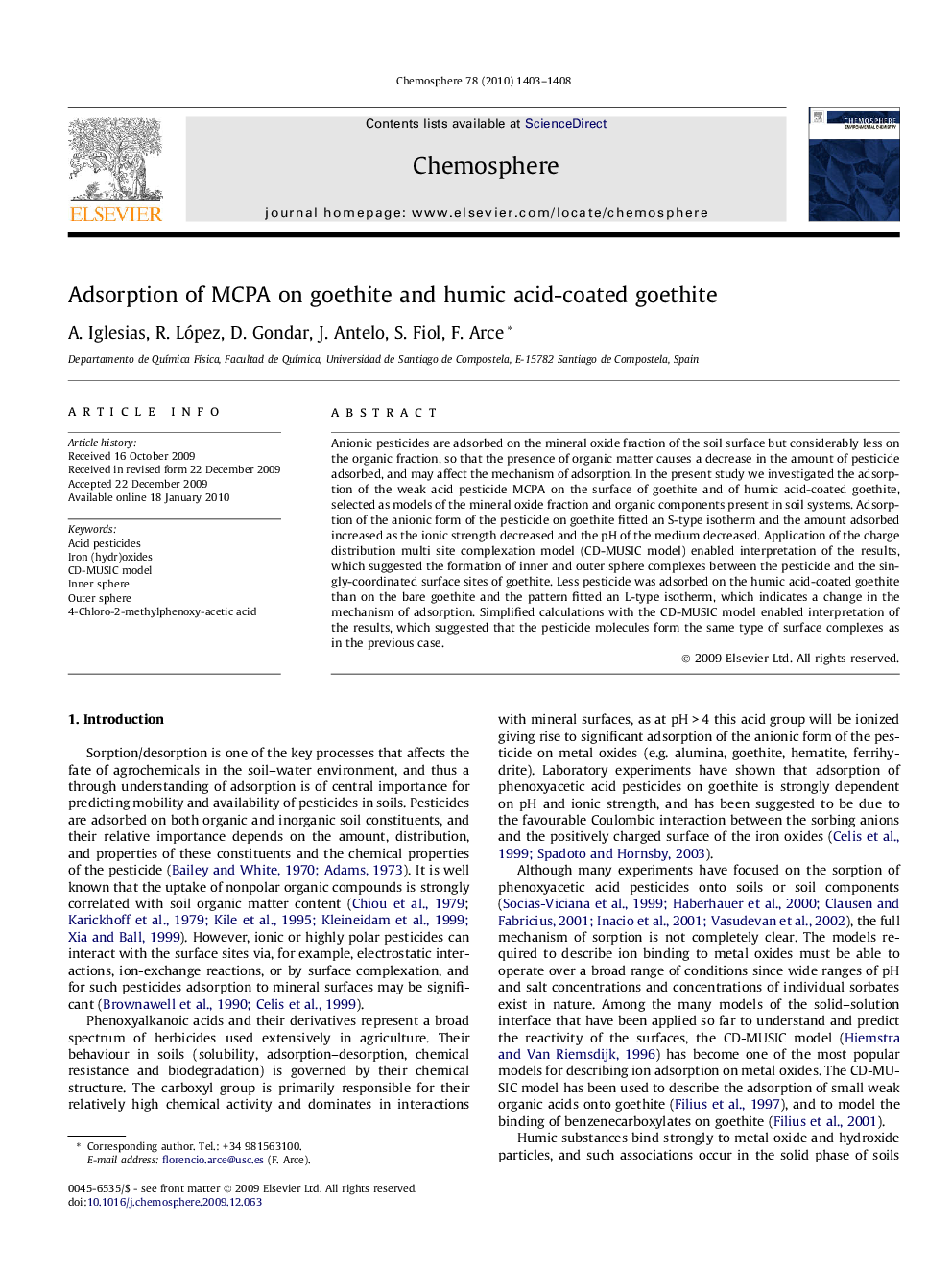| Article ID | Journal | Published Year | Pages | File Type |
|---|---|---|---|---|
| 4412011 | Chemosphere | 2010 | 6 Pages |
Anionic pesticides are adsorbed on the mineral oxide fraction of the soil surface but considerably less on the organic fraction, so that the presence of organic matter causes a decrease in the amount of pesticide adsorbed, and may affect the mechanism of adsorption. In the present study we investigated the adsorption of the weak acid pesticide MCPA on the surface of goethite and of humic acid-coated goethite, selected as models of the mineral oxide fraction and organic components present in soil systems. Adsorption of the anionic form of the pesticide on goethite fitted an S-type isotherm and the amount adsorbed increased as the ionic strength decreased and the pH of the medium decreased. Application of the charge distribution multi site complexation model (CD-MUSIC model) enabled interpretation of the results, which suggested the formation of inner and outer sphere complexes between the pesticide and the singly-coordinated surface sites of goethite. Less pesticide was adsorbed on the humic acid-coated goethite than on the bare goethite and the pattern fitted an L-type isotherm, which indicates a change in the mechanism of adsorption. Simplified calculations with the CD-MUSIC model enabled interpretation of the results, which suggested that the pesticide molecules form the same type of surface complexes as in the previous case.
